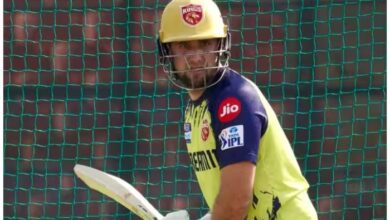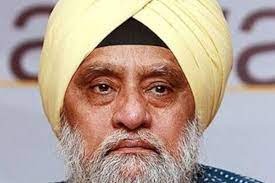Without a doubt, having a blast!
Kerala is home to almost one-third of the Indian squad that will compete in the World University Handball Championship. Eleven players from the state—seven men and four women—make up the men’s and women’s teams’ total of 32 players. It is not a miracle how this came to be. At the national level, our athletes have shown remarkable dominance, winning prizes for their individual colleges and institutions.

They will now compete against the world’s top student-athletes when the International University Sports Federation (FISU) games get underway in June. The tournament is taking place in Antequera, Spain, this time.
For many collegiate players, competing at this level of the game is their career high point. For some, it represents a move to the next performance level. Considering that India is participating in the tournament for the first time, a lot depends on the almost 50-person team that is scheduled to go.
Here, TNIE presents the players, the increasing prominence of Kerala varsities in the competition, and the enduring problem of financial hardship that befalls the state’s athletes.
Brass knuckles
You ask, what is handball? As the name suggests, players are divided into groups (seven total, according to the official count), and they pass the ball to the other team’s goal. Thus, visualize football with your hands just. The game, sometimes known as throwball, is regarded as the second-fastest in the world, just after ice hockey.
The sport was long seen as being under more well-liked ones, such as football and cricket. But the past ten or so years have been the game’s prime time. In Kerala, where two varsities have been promoting the sport and developing future stars, this advancement is unparalleled.
Of the eleven Keralan players, three are affiliated with Calicut University and eight are with Mahatma Gandhi (MG) University. They are from Sacred Heart College in Kochi: Anju Sabu, Anupama V R, Archana M S, Binoy George N J, Ramees P, Nirmal Syriac, and Nandhu Krishna K; Archana Venu from
Mohammed Faris T from Farook College in Kozhikode; Savid M and Jeevan Jose Joji from Sahrdaya College in Kodakara; and Assumption College in Changanassery.
The majority of them had started playing the game in school. In the case of Archana Venu, it was due to the lack of other sports opportunities at her school; while, Faris’s institution had a rich and enduring handball history. Each had a strong interest in the sport and a desire to advance, despite their differing motivations. The majority of them have played handball for more than ten years.
Powerhouse in handball
It’s clear that the bulk of the players—seven in all—attend Kochi’s Sacred Heart (SH) College. It’s also noteworthy that nine out of the eleven players have trained at the renowned lakeside facility, which is regarded as a handball powerhouse.
The SH men’s handball team has finished second in two inter-college tournaments and won eight in the last ten years. Despite just having started four years ago, the women’s squad has already won three varsity titles. Players from SH dominated the MG University team as well.
Ten members of the varsity women’s handball team are alumni of our institution. Three of the remaining players are past pupils, according to coach Antony Mathai, who has ten years of experience at the institution. The domination of SH is even more pronounced in the case of the men’s team. Out of the 16 members of the team, 15 have trained at the college. Ten of them are still enrolled in school.
The players were outstanding even on the national arena. “MG qualified for the national competition by placing second in the varsity handball tournament held in South India last year. We made it to the quarterfinals there. It’s no minor accomplishment, an MG University spokesman remarks.
Because of this achievement, Antony—who also coaches the MG handball teams—was chosen to be the men’s national coach for the FISU tournament that will take place in Spain. The native of Kadavanthra, nevertheless, is hesitant to claim all the glory.
“I owe this to my Ukrainian coach, Alexi Popovich. I spent five years training at his handball school in Kochi. I was able to learn different playing styles and methods there. I was able to teach my kids these skills when I became a coach at SH,” explains Antony.
Components
This Alexi-inspired style of play, along with their intense preparation, is undoubtedly what has allowed SH players to reach the highest levels. One of the players, Nandhu, says, “Unlike other teams, we follow a ‘quick play’ system which relies more on individual skill than on piston movement.”
The three students from Calicut University are optimistic that they would be able to grasp this method rapidly. Positions in handball are mostly set, unlike in football. Not too much overlap exists. Thus, it won’t be that challenging,” Faris, an Indian team member, adds.
Anju responds, “We know most of them, especially players from the Southern states,” in response to the query of how well they would get along with the other members of the team who are not from Kerala. We are acquainted with one another’s playing styles because we see them in tournaments.
Antony has also voiced confidence, stating, “Every member of the team possesses exceptional skill.” During the camp, our only task is to knit them together as a team. The coach responds, “We have not heard from the officials yet,” on the specifics of the camp. I understand that training would start after the all-India competition, which ends in the middle of May.
But a lack of funding is the team’s main problem. The youngsters are compelled to pay for their own participation even if they are representing India.
The true tragedy of our day is this. Because young athletes lack a support network to help them succeed in their sport, the sports culture is disappearing. Many later give up on their goals and turn to government work,” a sports representative who requests anonymity adds.
In the past, colleges would get funding from the Indian government to compete internationally in sports. But this ended around a decade ago.
“This practice may resume in the upcoming academic year, thanks to the intervention of the Sports Authority of India.” For the time being, MG University has chosen to give each student 50% of the monies, according to Binu George Varghese, the school’s director of sports.
While some players are finding this to be of great assistance, many others have not yet raised the required sum. “My family had to pay the fees for expedited visa processing as well as additional charges. My goal is to compete in an international event, and they didn’t want money to stand in the way of that. We’re hoping sponsors would step forward to provide a hand,” Bijoy adds.
He continues, saying, “We could use all the help we can get for handball to flourish.” The majority are also unhappy with how the state treats its athletes. especially considering that the players have received 100% of the funding from the Tamil Nadu government. Without a sure, this is a little disappointing. But we don’t want to pass up this opportunity,” Jeevan replies.
Yes, in fact. For the players, the game presents a great opportunity. With their current form serving as a guide, the Indian squad is sure to give everyone a serious competition. Could this be the start of a new era for handball?






